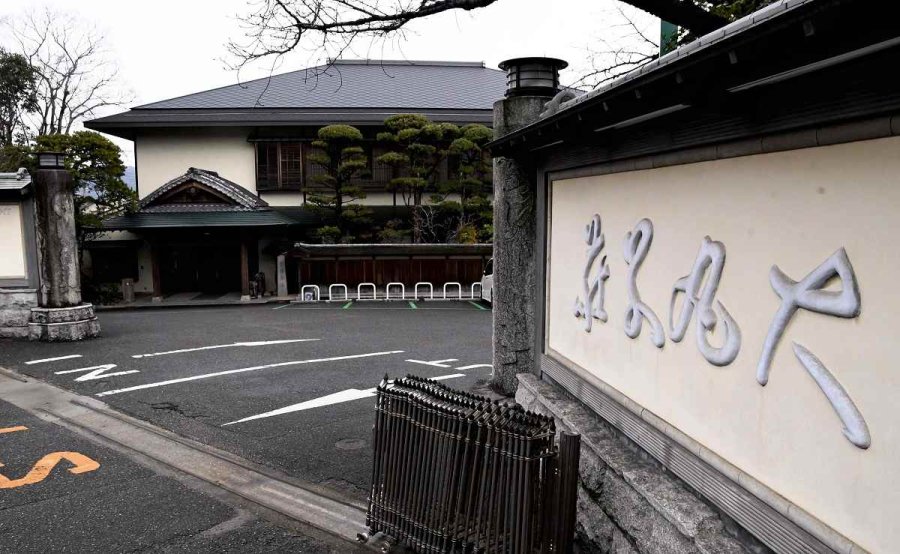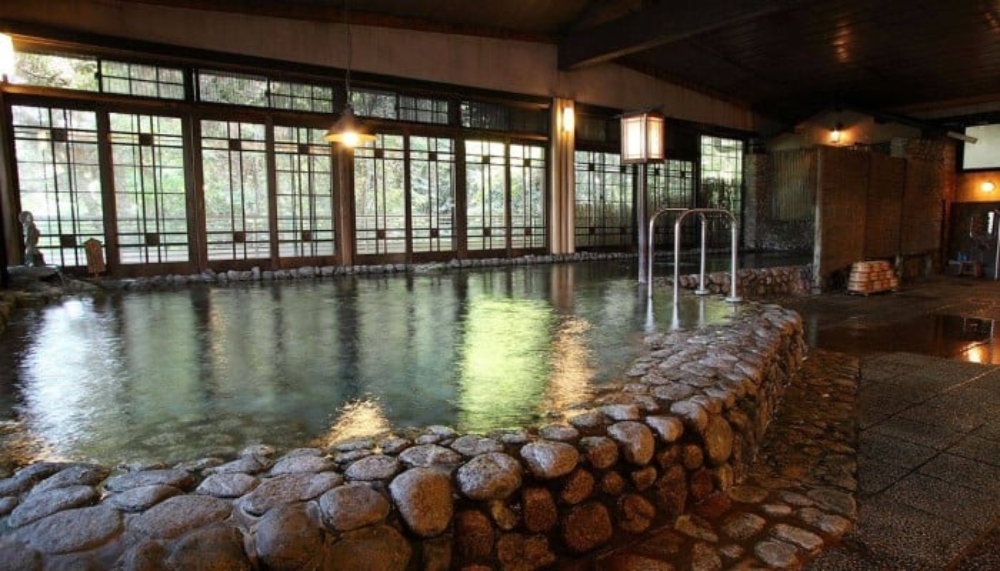Hot Spring Bathwater Found With Dangerous Levels Of Bacteria In Japan
A century-old inn in Japan has come under scrutiny after it was found that the hot spring bathwater was changed only twice a year, despite being required to do so more frequently. That hot spring bathwater found with dangerous levels of bacteria in Japan.
Author:Scarlet SunsetReviewer:Professor JhizFeb 28, 202320 Shares545 Views

A century-old inn in Japan has come under scrutiny after it was found that the hot spring bathwater was changed only twice a year, despite being required to do so more frequently. That hot spring bathwater found with dangerous levels of bacteria in Japan.
Daimaru Besso Inn Hot Spring Contamination
The Daimaru Besso inn in Chikushino, Fukuoka Prefecture, a hot spring bathwater found with dangerous levels of bacteria in Japan during an inspection in February 2023. The bacteria were found to be 3,700 times over the limit set by the Japanese Ministry of Health, Labour and Welfare.
The Daimaru Besso inn, which has been in operation for over 100 years, is a popular destination for tourists looking to experience the traditional Japanese hot spring baths, known as onsen.
The hot spring water is believed to have therapeutic properties and is used for relaxation and healing. However, the unhygienic conditions at the Daimaru Besso inn have raised concerns about the safety of such facilities.
The investigation was conducted by the local health authorities after several guests complained of skin irritation and rashes after using the hot spring baths. The authorities discovered that the hot spring bathwater was being changed only twice a year, instead of the recommended once a day.
The inn's management has since admitted to the negligence, stating that the staff had failed to follow the proper protocol for maintaining the cleanliness of the hot spring baths.
The hot spring bathwater was found to contain high levels of legionella bacteria, a type of bacteria that can cause a range of infections. Legionella is a type of bacteria that can cause a serious respiratory infection called Legionnaires' disease. It can also cause a milder infection known as Pontiac fever.
Legionnaires' disease is a potentially fatal pneumonia that can cause symptoms such as cough, shortness of breath, fever, muscle aches, and headaches. The disease is treatable with antibiotics, but it can be serious for people with weakened immune systems or underlying health conditions.
The incident has raised concerns about the hygiene standards of hot spring baths in Japan. Hot spring baths are a major tourist attraction in Japan, with thousands of visitors coming to the country every year to experience them.
However, the lack of proper regulation and monitoring has led to several incidents of contamination and outbreaks of infections in recent years.
The Japanese Ministry of Health, Labour and Welfare has issued guidelines for the operation of hot spring baths, which include requirements for maintaining the cleanliness of the facilities and the water.
However, the enforcement of these guidelines is largely left to the discretion of the operators, which has led to a lax attitude towards hygiene in some cases.
The Daimaru Besso inn has apologized for the negligence and has promised to take corrective measures to ensure the safety and hygiene of its hot spring baths. The inn has also offered refunds to guests who were affected by the contaminated water.
The incident at the Daimaru Besso inn has not only raised concerns about the hygiene standards of hot spring baths in Japan but also highlighted the need for stricter regulations and monitoring of such facilities.
The lack of proper enforcement of guidelines and regulations has led to similar incidents of contamination and outbreaks of infections in the past.
In 2019, a popular hot spring bath in Gifu Prefecture was closed after several visitors contracted a rare infection caused by a type of bacteria called Legionella pneumophila.
The bacteria were found in the hot spring bathwater, and the facility was shut down for several months for cleaning and disinfection. The incident raised concerns about the safety of hot spring baths in Japan, especially for elderly and immunocompromised individuals.
Hot spring baths in Japan are not only popular among tourists but also among the locals who consider them a part of their culture and tradition. However, the lack of proper regulations and monitoring has led to a lax attitude towards hygiene, which has put the health and safety of visitors at risk.
In response to such incidents, the Japanese government has introduced several measures to improve the hygiene standards of hot spring baths.
The Ministry of Health, Labour and Welfare has issued guidelines for the operation of such facilities, which include regular testing of the water quality, maintaining proper ventilation, and ensuring the cleanliness of the facilities.
The government has also introduced a certification system for hot spring baths that meet the required hygiene standards.
The certification, known as the "Onsen Mark," is issued by the Ministry of Health, Labour and Welfare and indicates that the facility meets the necessary standards for safety and hygiene.
Tourists visiting Japan are advised to look for the Onsen Mark when choosing a hot spring bath to ensure that the facility meets the required standards. They should also check the reviews and ratings of the facility before booking and ask the staff about the hygiene and safety measures in place.
People Also Ask
How Dangerous Is Hot Spring Bathwater That Is Contaminated With Bacteria?
Hot spring bathwater that is contaminated with bacteria can be very dangerous, as it can cause a range of infections and illnesses, including skin infections, respiratory infections, and gastrointestinal infections.
What Type Of Bacteria Was Found In The Daimaru Besso Inn Hot Spring Bathwater?
According to reports, the hot spring bathwater at the Daimaru Besso inn was found to contain excessive levels of a type of bacteria called legionella bacteria, which can cause infections in humans.
How Often Should Hot Spring Bathwater Be Changed?
Hot spring bathwater should be changed regularly, preferably on a daily basis, to ensure the hygiene and safety of the facility. The exact frequency of water change may vary depending on the size and usage of the facility.
What Are The Guidelines For Operating Hot Spring Baths In Japan?
The Ministry of Health, Labour and Welfare in Japan has issued guidelines for the operation of hot spring baths, which include regular testing of the water quality, maintaining proper ventilation, and ensuring the cleanliness of the facilities.
Conclusion
A hot spring bathwater found with dangerous levels of bacteria in Japan. The incident at the Daimaru Besso inn serves as a reminder of the importance of maintaining high hygiene standards in hot spring baths.
It is essential that the operators of such facilities take the necessary measures to ensure the safety of their guests, and that the authorities monitor and enforce the guidelines for the operation of these facilities.
Tourists visiting Japan should be cautious when using hot spring baths and should check the hygiene standards of the facilities before using them.

Scarlet Sunset
Author
Scarlet Sunset is a captivating and confident transgender individual who radiates sensuality and embraces her unique beauty. With a radiant smile and a touch of red lipstick, she captivates hearts by the poolside as the sun dips below the horizon, casting a warm glow on her unforgettable presence.
Despite societal norms and expectations, Scarlet celebrates her body, proudly defying conventional standards of beauty. Her curves tell a story of self-acceptance and empowerment, challenging stereotypes and inspiring others to embrace their own bodies without reservation.

Professor Jhiz
Reviewer
Professor Jhiz brings fun to teaching anatomy. Born in China, she shares her fascination for how the body works.
Students say her lectures are lively with jokes and stories. She draws cartoon diagrams that highlight structures creatively.
Professor seeks to inspire curiosity and joy in anatomy. She treats each class like a show using props and costumes.
When not teaching, Jhiz enjoys karaoke and novelty socks. Her goal is passing on a spirit of wonder to students.
Latest Articles
Popular Articles
